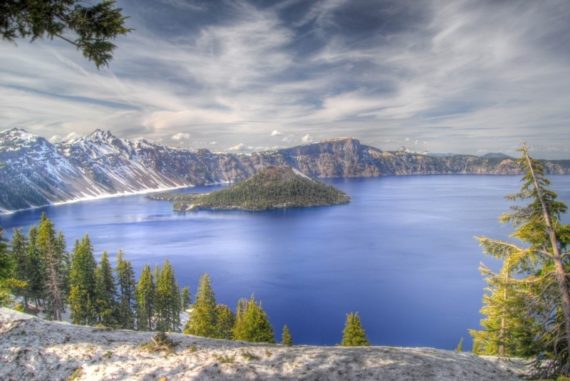Lithium is a key component of lithium-ion batteries and lithium-ion batteries are a key component of the transition from fossil fuels to renewable energy and electric cars. But until now, it has been in relatively short supply, sparking fierce competition among mining companies. It is one of the most abundant elements in the world, but commercial mining has been limited due to limited demand. A new Stanford study offers some insight into where more lithium can be gathered. It is titled, “Lithium enrichment in intracontinental rhyolite magmas leads to Li deposits in caldera basins.”
Wow. Sounds like a real page-turner, doesn’t it? To save you from having to plow through page after page of turgid prose, we have filtered out the essence of the study so you don’t have to. It says the one element critical to virtually all storage batteries in commercial use today can be found in the primordial ooze at the bottom of volcanic lakes.
Competition For Lithium Resources
Gail Mahood, a professor of geological sciences at Stanford’s School of Earth, Energy & Environmental Sciences, says, “We’re going to have to use electric vehicles and large storage batteries to decrease our carbon footprint. It’s important to identify lithium resources in the US so that our supply does not rely on single companies or countries in a way that makes us subject to economic or political manipulation.”
Those of you who are following the transition to a zero-emissions economy are probably aware that most of the world’s known reserves are in Australia and Chile. China has been aggressively buying up the mining rights to the lithium-rich brine deposits located in South America. Some alarmists have suggested future wars could be fought over access to lithium resources, just as wars have been fought over oil reserves. Penny stock analysts have been warning of impending shortages and soaring prices.
Focus On Supervolcanoes
The Stanford researchers have focused their attention on what they call “supervolcanoes” that have produced hundreds of cubic miles of magma — the hot, flowing rock that spews forth during a volcanic eruption and spreads over a wide area. These supervolcanoes appear as huge holes known as calderas rather than the cones typically associated with ordinary volcanoes.
So much magma is discharged that the crust of the earth collapses afterward, leaving a depression that later fills with rainwater. The water and the hot springs left behind leach lithium from the volcanic deposits, which then mixes with sediment at the bottom of the lake to form a clay known as hectorite.
“The caldera is the ideal depositional basin for all this lithium,” says lead author Thomas Benson, a recent PhD graduate at Stanford Earth who began working on the study in 2012. “We’ve had a gold rush, so we know how, why, and where gold occurs, but we never had a lithium rush. The demand for lithium has outpaced the scientific understanding of the resource, so it’s essential for the fundamental science behind these resources to catch up.”
During its research, the Stanford team analyzed samples taken from a range of tectonic settings, including the Kings Valley deposits in the McDermitt volcanic field located on the Nevada–Oregon border. Volcanic activity occurred there about 16 million years ago. They compared those results with samples from the High Rock caldera complex in Nevada, Sierra la Primavera in Mexico, Pantelleria in the Strait of Sicily, Yellowstone in Wyoming, and Hideaway Park in Colorado.
Easy Diagnostic Techniques
Their research revealed that concentrations varied widely as a function of the tectonic setting of the supervolcano. “Understanding how lithium is transported in magmas and what causes a volcanic center to become enriched in lithium has never really systematically been done before,” Benson says. Gail Mahood adds, “If you have a lot of magma erupting, it doesn’t have to have as much lithium in it to produce something that is worthy of economic interest as we previously thought. You don’t need extraordinarily high concentrations of lithium in the magma to form lithium deposits and reserves.”
Determining how much of the mineral is contained in any particular area is difficult, but the researchers have noted a correlation to other minerals that can help identify a site as a potentially good source for mining. A higher concentration of easily detectable rubidium in the bulk deposits indicates more is available, high concentrations of zirconium indicate less is available.
“We can essentially use the zirconium content to determine the lithium content within about 100 parts per million,” Benson says. “Now that we have a way to easily find more of these lithium deposits, it shows that this fundamental geological work can help solve societal problems – that’s really exciting.”
Source: Cleantechnica



